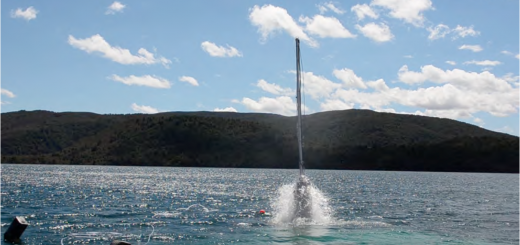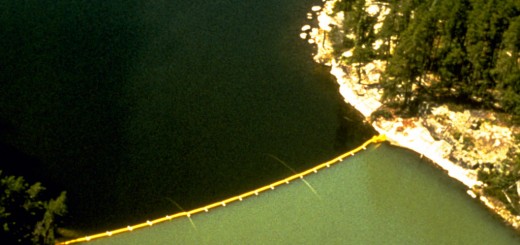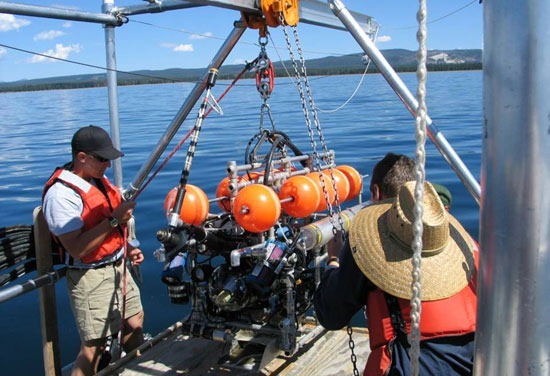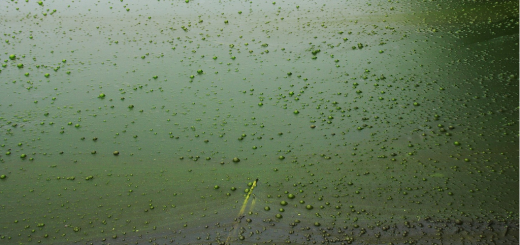Research Brief: Impacts of Snow Removal on a Small Dystrophic Lake
0Winter lake dynamics and snow conditions on lakes influence lake dynamics throughout the winter and into the spring. While winter lake research has grown more common, there is a gap in data on how snow-free conditions change lake temperature in dark water lakes, like the dystrophic lake of South Sparkling Bog in Wisconsin.
Bridging this gap is particularly important as winters warm more quickly, and climate change-related weather patterns lead to declines in snowfall, sometimes resulting in snow droughts.
A 2024 study published in Limnology and Oceanography Letters examined how snow cover drives under-ice thermal dynamics throughout the winter on a small dystrophic lake.1
The hypothesis of the study was that snow-free ice-covered conditions throughout an entire winter would result in increases in black ice thickness and increased solar radiation penetration through the water column. This change would induce radiatively driven convective mixing, typically associated with late-winter dynamics, resulting in a warmer water column and deeper convective mixing.1
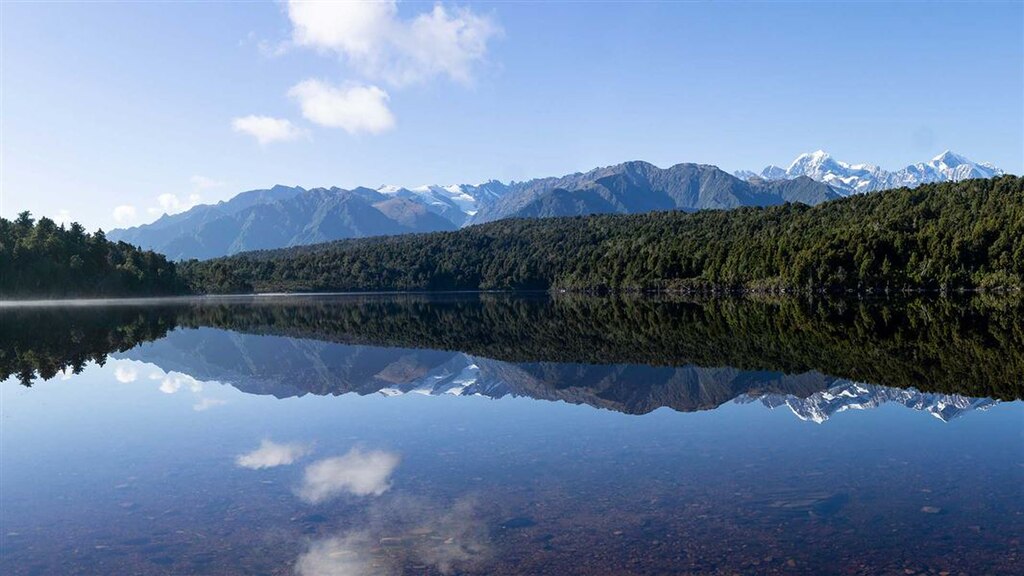
Lake Gault is a dystrophic glacial lake in the hills above Lake Matheson, near the town of Fox Glacier on the West Coast, New Zealand. Like Lake Matheson, its tannin-stained waters reflect the Southern Alps on a calm clear day. (Credit: Isobel Campbell / via Wikimedia Commons CC BY 4.0)
Methods
From 2019 to 2021, a snow manipulation experiment was conducted on a small dystrophic lake in northern Wisconsin, South Sparking Bog. Crystal Bog and Trout bog were non-manipulated reference dystrophic bog lakes. Allequash Lake was a mesotrophic reference lake.
Snow was removed from the surface of South Sparkling Bog over the winters of 2019, 2020, and 2021. Snow was removed immediately following every snow event. In 2019-2020 weather events in November resulted in primarily white ice on the lake. In 2020-2021, calmer conditions resulted in entirely black ice formation.
Climate data were obtained from the NOAA integrated database of daily climate summaries for Mocqua, Wisconsin. Water temperature measurements came from an under-ice buoy, which collected data every 10 minutes using a series of Onset HOBO Pendants at seven depths. A similar setup was deployed in Trout Bog.
Manual temperature profiles were conducted biweekly to monthly with a handheld YSI ProODO meter through an auger hole. Total ice, black ice, and white ice thickness were measured in the auger hole throughout the winter.
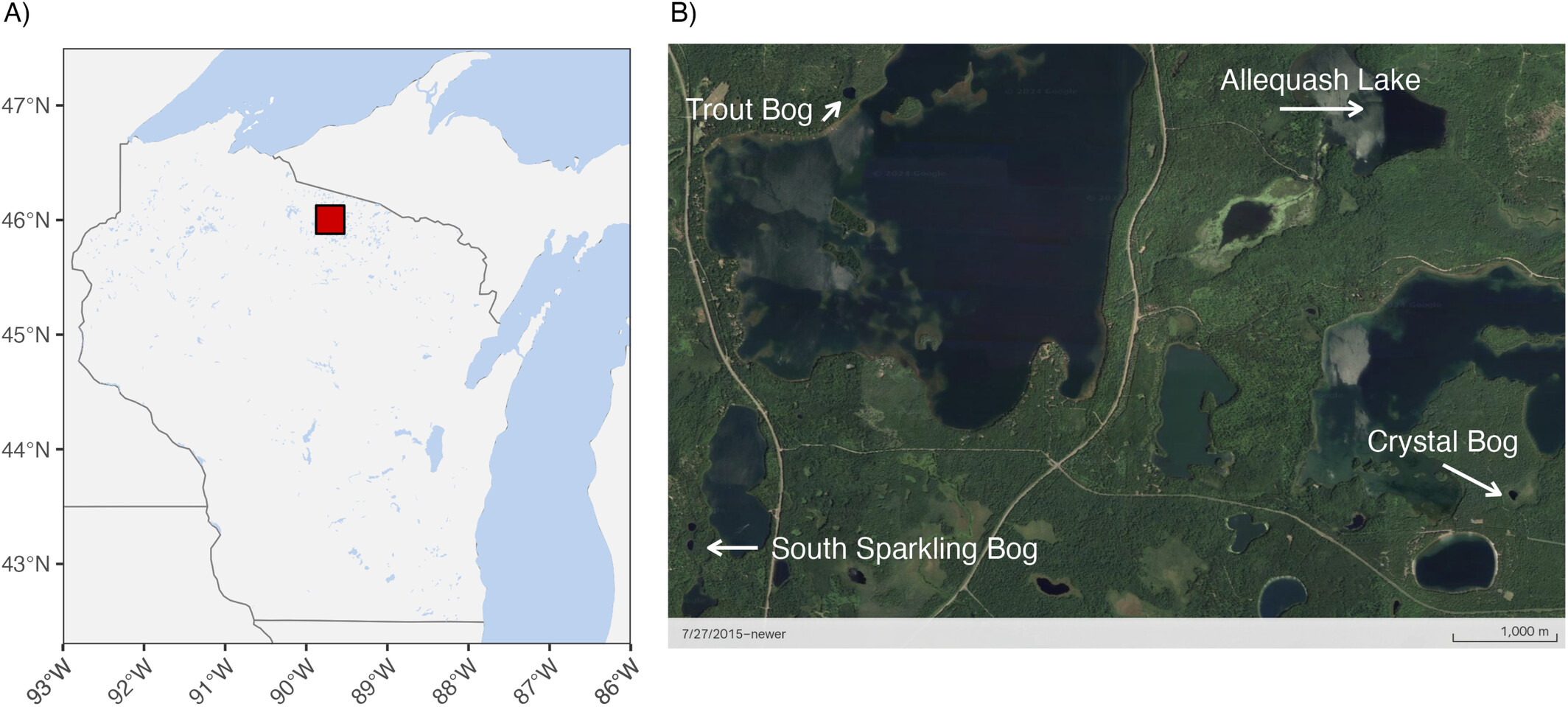
(A) The location of South Sparkling Bog (manipulation lake), Trout Bog, Allequash Lake, and Crystal Bog in northern Wisconsin, USA, and (B) a satellite image showing the forested watershed surrounding the lakes. (Credit: Google Earth imagery modified in Dugan et al., 2024)
Results
In the three study years, ice duration on South Sparkling Bog and Trout Bog was between 155d (2018-2019), 169d (2019-2020), and 140d (2020-2021). Ice thickness between Trout Bog and South Sparkling Bog was similar over the study period.
The presence of snow cover was found to influence thermal dynamics in South Sparkling Bog, as thicker snow cover slowed the transfer of heat from lake ice to the atmosphere. In contrast, snow removal caused rapid heat loss due to the high thermal conductivity of ice—additionally, in late winter, snow removal resulted in rapid heat gain from solar radiation.
These differences in thermal dynamics were accentuated in 2020-2021 when South Sparkling Bog had primarily black ice.1
While the researchers hypothesized that a snow-free South Sparkling Bog would be warmer due to easier solar radiation penetration, this hypothesis was incorrect, as the snow-free season resulted in lower water temperatures overall.
However, specific changes were dependent on the time of year and lake clarity. In this specific dystrophic lake, snow removal in early winter resulted in lake cooling, and in late spring, no snow led to rapid heat gain and radiatively driven convection. Lake clarity also contributed to thermal gradation as solar radiation struggled to permeate and mix.
Overall, the results of the study have important implications for under-ice ecology, which set up lake conditions for the rest of the year.
Source
- Dugan, H. A., Ladwig, R., Schramm, P., & Lottig, N. R. (2025). Snow removal cools a small dystrophic lake. Limnology and Oceanography Letters, 10(1), 122-129. https://doi.org/10.1002/lol2.10444




